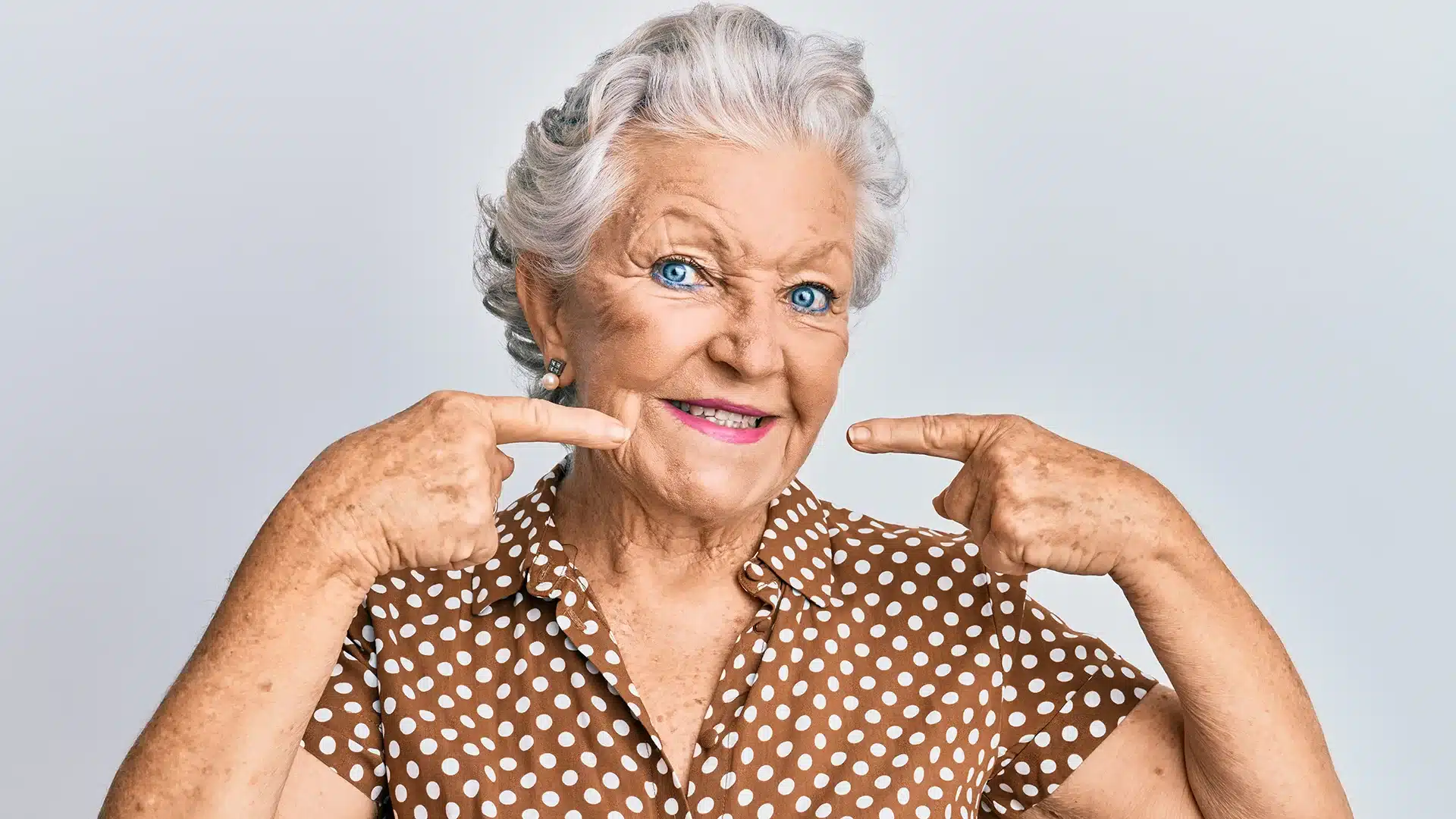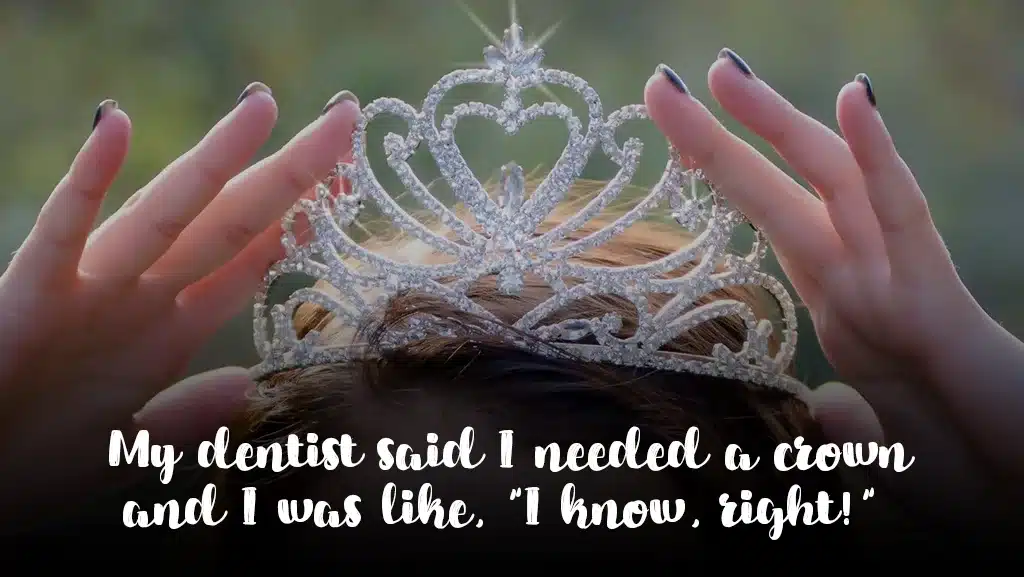Obviously, you can’t easily tell the difference between two human skulls unless you happen to be into forensic anthropology or forensic odontology, but it’s important we start with the bones behind the face (and smile) to talk about how dentures can actually affect your overall facial appearance.
Keeping It All Together (Dem Bones)
Let me back up to a bit of the science behind the face (and smile) for a minute . . .
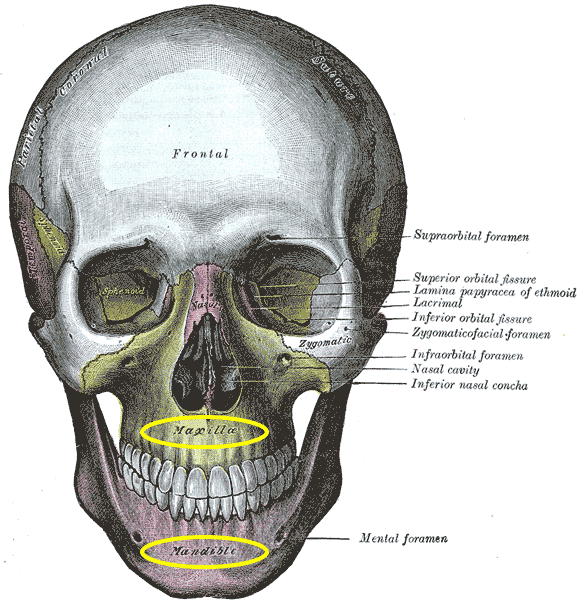
Of the 206 bones in our bodies, 22 of them make up our skull. Of those 22 bones working together to protect our brains and house some pretty handy sensory organs, 14 of those cranial bones form our facial skeleton.
Your jaw bone (or mandible) is the largest bone in the human skull and along with your upper jaw bone (or maxilla) it’s the part of your facial bones dentists like me are most concerned with. It makes sense, right? They’re the framework – the bones that hold your teeth (via roots).
Add on some cartilage, ligaments, muscles, sutures, teeth, organs, and skin and you’ve got all of the components that go into eating, talking, smiling, smirking, and laughing as well as rendering the reflection you see in a mirror.
That skull illustration above is a great way for you to visualize how your upper teeth (the upper arch of teeth) are attached to the maxilla and your lower teeth (lower arch of teeth) are attached to the mandible. I circled both in yellow, but they’re very easy to see on this sketch.
Fun fact about that sketch: Henry Vandyke Carter was an English surgeon and anatomical artist most well known for his illustrations in a medical reference book by Henry Gray. The book (first published in 1858 and currently in it’s 42nd edition of revisions) is called Gray’s Anatomy. It’s not just a TV show, you know.
Missing Teeth Affect Your Facial Appearance
As you’re probably already aware, when you have a missing tooth or teeth, bone loss also occurs. What might surprise you, though, is that it can be quite a significant change as the process of resorption occurs, particularly if you’re missing several teeth. Your jaw bone can literally shrink in size.
Beyond bone deterioration, there are also misalignment issues that can start to happen. Opposing teeth are no longer meeting anything and remaining teeth can begin to shift, which can lead to problems with eating food, of course, but also lead to pain your jaw, head, and even neck.
And, of course, missing teeth can change the overall shape of your face. Facial collapse (sunken cheeks, sagging skin) can begin as your lips and your cheeks are no longer being held in place or working to house your teeth. The existence of your teeth affects your overall facial appearance more than you’d think.
Dentures also Affect Your Facial Appearance
Your face is a set of points and measurements between features, so when it comes to a person’s facial structure, which includes your teeth, supporting jaw bone, cheeks, lips and tongue, there is an optimal sweet spot called the “functional zone.”
Your lips and cheeks basically act like a rubber band in the front, holding your teeth back from going all Bugs Bunny, while your tongue presses up against them from behind when talking, chewing or just resting. This point at which everything is being supported, and there are no forces pushing forward or backward is where your mouth’s neutral zone is. Think of it like having clutch control on a manual transmission car, the ‘bite point’ is where you don’t slide back down the hill or accelerate off into the bumper in front of you!
This is actually also a huge factor in orthodontics – if it’s not done correctly. Teeth can be moved into place, but if they have nothing to ‘butt up against’ they are going to shift as soon as the braces comes off.
Goldilocks and The Three Dentures?
A denture that is too big, will make someone look like a hamster with a mouth full of food. On the other hand, no teeth, or a denture that is too small, will have the opposite effect where your entire face starts to sink in.
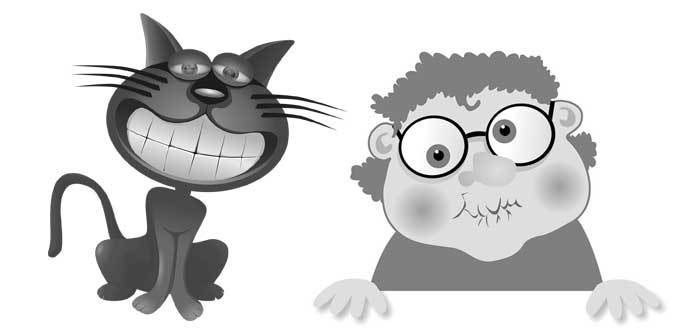
Okay, that’s a cartoon representation of a cat with huge teeth and a woman with no teeth, but it can actually be pretty easy to spot someone who is wearing dentures. And I’m not talking about the perfectly straight, white smile that this cat has – or that makes a person look like a weatherman or a TV evangelist.
Ideally, you shouldn’t be able to tell the difference between someone with natural teeth and someone who’s wearing good fitting dentures. Ironically though, well made dentures actually give someone the appearance of a non-surgical ‘face lift.’ Dentures that are too small, or no longer fit because of age and bone loss, can have the exact opposite effect and look more like a face drop (or droop).

So how can you tell whether someone does (or does not) have dentures in their mouth? Some people have cheeks that cave in, an unsupported upper lip that also folds inward (which creates additional ‘smoker’s wrinkles’ around the mouth as well as ‘nutcracker lines’ down the chin), crow’s feet around the corners of the mouth, a crease that is parallel to the lower lip (labiomental crease), and parenthesis lines (nasolabial folds) around the mouth as a result of the cheek pads drooping because of gravity and/or the rising of the chin due to tooth/bone loss.
It’s a very distinctive “look” and once you see it, you’ll soon be able to identify the ill fitting denture crowd like a pro.
Monkey Mouth (“I wanna walk like you, talk like you . . . “)
Actually, most people don’t want to walk, talk, and look like a monkey, and this is one of the comments I hear most from my patients who are considering dentures. It is often referred to as “monkey mouth” or “horse face” because the face can bulge around the lips and mouth.
The reality is, putting a foreign appliance (dentures) into your body (mouth), can cause some of the facial features to distort – temporarily. I say this is temporary because there is generally a bit of swelling and the lip needs some time to adjust to the denture, therefore causing some temporary bulge in the area. The good news is that this naturally resolves over time (a couple of months at the very most), as any swelling subsides and your facial muscles get used to working around your new smile.
This brings me to the follow up question (after the monkey mouth one) that I get a lot from patients; are there any exercises I can do to avoid denture face?
I, too, have seen the books/videos/oral device combos on Amazon for $59.99 that are supposed to be like a workout routine for the face, to help stop it and even reverse sagging. By facial sagging we’re talking about the jowls starting to obscure the chin and neck, where the mouth and lips fold in creating a sunken appearance. Think Jabba the Hut.
Let this be the first and only time I will discourage an exercise routine to help you get into shape. The truth is, facial exercises will not stop or reverse facial sagging, despite what the lady on YouTube might be telling you.
The sunken face that comes from having dentures isn’t actually related to your muscles at all, it’s caused by tooth (and consequently) bone loss in the jaw. Natural teeth are embedded in your jawbone and as you go through your daily life with natural teeth, your jawbone is stimulated by pressure and the body works to maintain it. Without natural teeth (wearing dentures), your jawbone is no longer getting that stimulation and since your body thinks it no longer needs it needs, the bone begins to break down, or resorb.
As jawbone density declines, there’s less to support your facial muscles and skin. In fact, strengthening your facial muscles (jaw muscles) can unfortunately lead to an increased pressure on your jawbone if your dentures are loose or otherwise ill-fitting, which powers the vicious cycle of more bone loss.
It’s kind of like the concept of an extreme weight loss situation – the fatty tissue is gone, but the skin is still there. Now the excess skin drops, sags, and wrinkles without the the support of what was once there. And realistically, the only solution to resolve this problem isn’t more sit ups or bicep curls, it’s a trip to your local cosmetic surgeon for a tummy tuck.
So Now What?
The only real way to avoid denture face is to get skillfully designed, custom dentures, take great care of them and visit your dentist regularly to ensure a good fit.
There is a lot of science and engineering that goes into making quality dentures for someone, especially when you want to make sure that everything is in the optimum functional zone. Obviously, your muscles aren’t static, they change position depending on whether you’re tearing off a chunk of beef jerky, shouting at the driver in front of you who is obviously daydreaming at the green light, or trying to hold an awkward smile to get through a family photo shoot.
Correct measurements and an analysis of your jaw are essential parts of the preparation for dentures. It really is part science, part art. Everyone talks about being able to eat a nice steak or corn on the cob, but don’t let an ill-fitting denture get in the way of the simple pleasure of enjoying a doughnut.
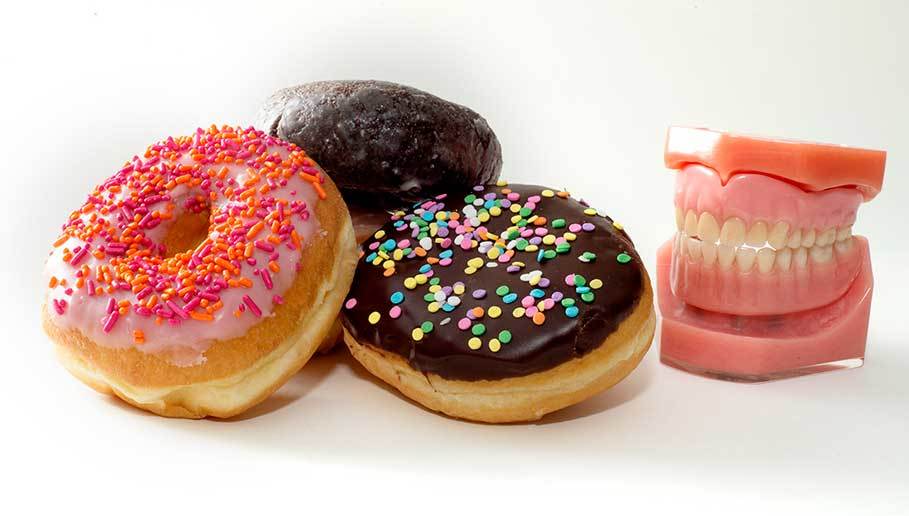
If you would like to learn more about how we fabricate dentures or how I get a denture dialed in to your optimum functional zone so that you don’t get “denture face,” give the office a call and schedule an appointment.
Dentures should feel good, be functional, and look natural – and we’re here to help!



